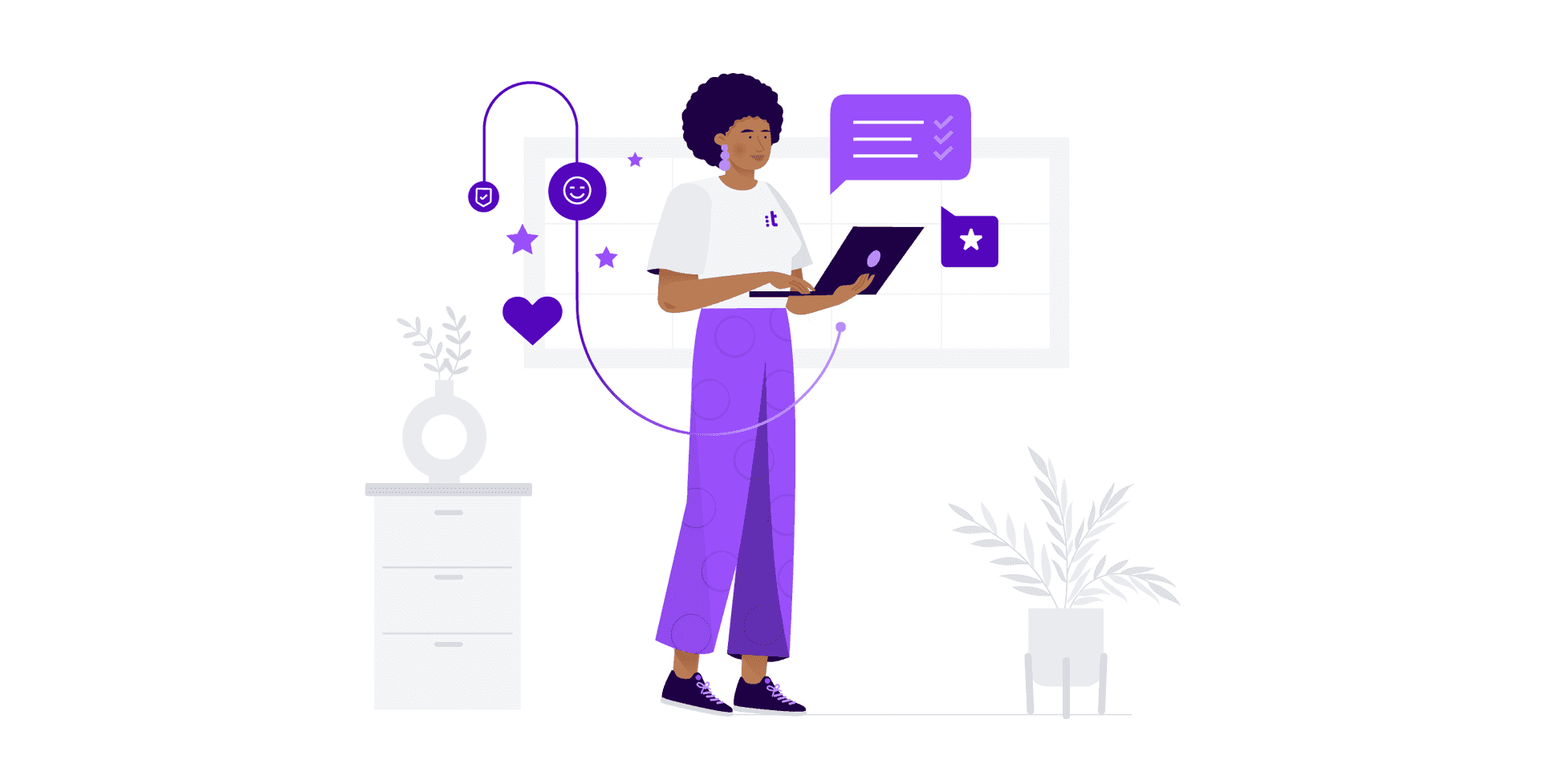20 ways to use rewards to motivate employees

By Celia Cerdeira
0 min read

Without motivated agents, contact centers can be faced with not only high employee turnover rates, but also poor customer satisfaction.
This is why it’s so important to find ways to improve employee engagement and show them you care. One of the best ways to do this is through rewards programs.
It can be a bit tricky to find rewards to motivate employees that also fit your budget, which is why we’re giving you a few tips.
How to motivate employees.
Enhancing employee motivation through rewards doesn’t have to be a daunting task for managers. With the right techniques and industry-leading cloud call center software, managers can expertly utilize rewards to boost employee motivation. Empower your workforce with incentives such as bonuses, gift cards, time off, recognition awards, and heartfelt words of appreciation. These rewards reinforce desired behaviors, build loyalty, and foster high levels of employee engagement.
Managers who are developing, revamping, or currently implementing an employee rewards program should consider these 20 tips:
1. Involve all employees in the development, implementation, and revision of rewards programs.
Involving all employees (or representatives from different positions) will encourage communication between employees and management about the rewards process. It will also ensure that both employees and upper management are on board with the reward system.
2. Ensure that employees view the rewards as worth the effort.
Including employees in the development process of the reward program is critical to ensuring that they value the rewards and see them as worth the effort. Managers should value employee input and select rewards accordingly. Employees who see the rewards as worth the effort will be more motivated to work hard to obtain them.

3. Make sure that employees understand how to earn the rewards.
Managers should clearly delineate how employees can earn rewards. When employees have a comprehensive understanding of what is expected of them, they will be more capable of achieving performance standards.
4. Set reasonable and transparent performance standards for rewards.
Employees must see the rewards as attainable to engage in the necessary effort to obtain them. Check in with employees to ensure that they believe the rewards are within their reach. Also, providing employees with a dashboard where they can view their performance in real-time will allow them to accurately assess their own performance and have realistic expectations for rewards.
5. Base reward determinations on objective performance data.
When motivational incentives for employees are distributed based on objective data, they are more likely to view the process as fair and have a concrete understanding of what is expected of them. This will increase their motivation to achieve the desired performance results.
6. Make sure employees view the reward system as fair.
When employees view the reward system as fair, they will be more engaged in trying to obtain the reward. Rewards should be distributed consistently according to predetermined policies. Never engage in favoritism or cut corners as this will have a negative impact on employee performance.
7. Always link rewards to performance.
For rewards to have the most impact on influencing employee performance, they must be directly linked to the desired behavior. Tie praise, recognition, cash rewards, and non-cash rewards to specific results. When employees understand the connection between their reward and their performance, they will be motivated to perform optimally in the future.
8. Recognize small and large accomplishments.
Employees should be rewarded when they meet large goals as well as smaller milestones. This will ensure that they receive recognition for their progress and that their behavior is consistent with company expectations.
9. Reward teamwork and cooperation.
Team-based incentives were found to be more effective at increasing performance than individual incentives. If team-based rewards to motivate employees are not already included in the company strategy, they should be. Additionally, the resources devoted to team-based rewards should be substantial. This could have a significant impact on employee cooperation and the company’s bottom line.
10. Never take good performance for granted.
It’s easy to stop rewarding top performers, but this could be a fatal flaw. To keep top talent on the team, ensure that your company continues to acknowledge and reward excellent performance.
11. Provide rewards immediately after the employee achieves the desired behavior.
There is a temporal component to the effect of the reward. The longer the delay in providing the reward after the employee’s achievement, the less of an impact it has on shaping subsequent behavior. Reward behavior that meets performance standards immediately.
12. Match the reward to the employee.
Allow each employee to select their own reward or decide what rewards employees should receive under predefined circumstances. This will enhance their commitment to achieving the reward by engaging in the required behavior. Understanding the needs of employees is central to this process.
13. Offer financial rewards, non-monetary rewards, and recognition.
There are many different types of rewards to motivate employees, but reward systems that include a combination of cash and non-monetary rewards as well as social awards, such as recognition and praise, have the greatest impact on employee performance. Pay cash bonuses in a lump sum to maximize their effect as money only motivates when it is a significant amount.
14. When employees learn a new task, distribute rewards based on a continuous reinforcement schedule.
The most effective way to encourage learning a new task is by reinforcing employee behavior on a continuous schedule. This can require considerable effort when executed by a manager; however, using an employee reward software program is a more feasible and cost-effective solution.
15. Once the behavior becomes a habit, distribute rewards based on a variable ratio or variable interval schedule.
Variable ratio and variable interval schedules of reinforcement result in the most significant behavior changes once it becomes a habit. This change in behavior is also more resistant to weakening. Therefore, one of these reinforcement schedules should dictate the reward distribution process after the behavior has become a habit.
16. Do not disclose the cash value of non-monetary tangible rewards.
Employees who are unaware of the exact cash value of non-monetary rewards are more motivated by them. Do not disclose the amount unless necessary.
17. Use long-term rewards programs.
Long-term rewards programs have the greatest effect on employee performance and the resulting gains last longer.
18. Balance competitive reward programs with non-competitive programs.
Competitive incentive programs are just as effective as non-competitive reward programs in increasing performance. An effective rewards strategy should include both.
19. Make rewards an integral part of the company’s strategy.
Motivational incentives for employees are invaluable in aligning employee behavior with the organization’s business strategy. Ensure that rewarded behavior is in line with company standards, objectives, and strategy.
20. Change the rewards frequently.
When the reward is changed frequently, employees will be more surprised and the process will be more exciting. When employees are excited about rewards, they will work harder to achieve them.
Takeaways.
Motivating employees to want to perform for your company can create a sense of loyalty, increasing employee retention and improving customer service. These 20 tips show you how to develop an effective employee rewards program.
While this is the guide to motivating employees, it’s important to track agent progress. Use a cloud contact center software platform that includes native employee activity tracking so that you can know exactly when your employees should be rewarded.
FAQs.
How to motivate employees without monetary rewards?
There are many different types of motivational incentives for employees, including non-monetary ones, like:
- Recognition or praise.
- Opportunities for growth.
- Remote work flexibility.
- Chances to show appreciation towards co-workers.
- Being entrusted with more responsibility.
- Professional training programs.







